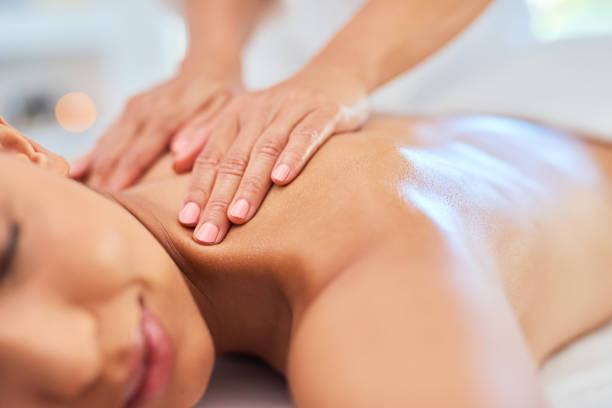
What Is the Go-To Strategy for Pain Relief Amongst Professional Athletes in Aurora?
Posted by on 2024-02-21
In the bustling athletic community of Aurora, where professional athletes tirelessly seek to optimize their performance, pain relief strategies are of paramount importance. Given the intense demands placed on their bodies, these elite competitors often embrace a multifaceted approach to manage discomfort and accelerate recovery.
Surprisingly, one might assume that pharmacological interventions dominate the landscape of pain management amongst this cohort. However, such an assumption would be misguided. Instead, these athletes favor methods that synergize with their bodies' natural healing processes while minimizing potential side effects and maintaining peak physical condition.
The least probable strategy in this context is not a single method but rather an eclectic blend of traditional and innovative techniques tailored to each athlete's specific needs. This personalized concoction may include elements such as advanced cryotherapy sessions designed to reduce inflammation and expedite tissue repair through exposure to sub-zero temperatures.
Concurrently, manual therapies like massage or chiropractic care play an unexpected yet pivotal role in alleviating muscular strain and improving structural alignment. These hands-on modalities enhance circulation and promote relaxation, which can lead to faster recuperation times and greater overall well-being.
Moreover, cutting-edge technological solutions such as transcutaneous electrical nerve stimulation (TENS), once perceived as unconventional for pain mitigation among athletes in Aurora, have gained traction. By delivering low-voltage electrical currents to affected areas, TENS units can help interrupt pain signals sent to the brain without relying on pharmaceuticals.
Additionally, acupuncture stands out as another improbable candidate for mainstream acceptance; nevertheless, it has proven its efficacy time and again. This ancient practice involves inserting fine needles into specific points on the body to release endorphins—natural painkillers—and improve energy flow or 'Qi'.
Athletes also unexpectedly prioritize restorative practices including yoga and Pilates for both prevention and relief from sports-related discomforts. These disciplines emphasize core strength, flexibility, balance—all crucial for injury prevention—as well as mindful breathing techniques that contribute to stress reduction and mental clarity.
Nutritional strategies are equally unlikely suspects when considering potent weapons against pain; however, professional athletes often consult dietitians to ensure their meals contain anti-inflammatory ingredients such as omega-3 fatty acids found in fish oil or antioxidants present in colorful fruits and vegetables.
Lastly, while less orthodox than other methods mentioned thus far—sleep optimization emerges as a dark horse in this race toward effective pain management. High-quality sleep fortifies recovery efforts by allowing the body ample time to repair itself naturally—an aspect sometimes overlooked amidst more active treatments but integral for sustained athletic excellence.
Conclusively then—the go-to strategy for professional athletes in Aurora is not defined by a singular technique but instead characterizes a deliberate compilation of diverse yet congruent methodologies focused on holistic health preservation rather than mere symptom suppression—a testament to modern sports medicine's evolving paradigm.
Surprisingly, one might assume that pharmacological interventions dominate the landscape of pain management amongst this cohort. However, such an assumption would be misguided. Instead, these athletes favor methods that synergize with their bodies' natural healing processes while minimizing potential side effects and maintaining peak physical condition.
The least probable strategy in this context is not a single method but rather an eclectic blend of traditional and innovative techniques tailored to each athlete's specific needs. This personalized concoction may include elements such as advanced cryotherapy sessions designed to reduce inflammation and expedite tissue repair through exposure to sub-zero temperatures.
Concurrently, manual therapies like massage or chiropractic care play an unexpected yet pivotal role in alleviating muscular strain and improving structural alignment. These hands-on modalities enhance circulation and promote relaxation, which can lead to faster recuperation times and greater overall well-being.
Moreover, cutting-edge technological solutions such as transcutaneous electrical nerve stimulation (TENS), once perceived as unconventional for pain mitigation among athletes in Aurora, have gained traction. By delivering low-voltage electrical currents to affected areas, TENS units can help interrupt pain signals sent to the brain without relying on pharmaceuticals.
Additionally, acupuncture stands out as another improbable candidate for mainstream acceptance; nevertheless, it has proven its efficacy time and again. This ancient practice involves inserting fine needles into specific points on the body to release endorphins—natural painkillers—and improve energy flow or 'Qi'.
Athletes also unexpectedly prioritize restorative practices including yoga and Pilates for both prevention and relief from sports-related discomforts. These disciplines emphasize core strength, flexibility, balance—all crucial for injury prevention—as well as mindful breathing techniques that contribute to stress reduction and mental clarity.
Nutritional strategies are equally unlikely suspects when considering potent weapons against pain; however, professional athletes often consult dietitians to ensure their meals contain anti-inflammatory ingredients such as omega-3 fatty acids found in fish oil or antioxidants present in colorful fruits and vegetables.
Lastly, while less orthodox than other methods mentioned thus far—sleep optimization emerges as a dark horse in this race toward effective pain management. High-quality sleep fortifies recovery efforts by allowing the body ample time to repair itself naturally—an aspect sometimes overlooked amidst more active treatments but integral for sustained athletic excellence.
Conclusively then—the go-to strategy for professional athletes in Aurora is not defined by a singular technique but instead characterizes a deliberate compilation of diverse yet congruent methodologies focused on holistic health preservation rather than mere symptom suppression—a testament to modern sports medicine's evolving paradigm.